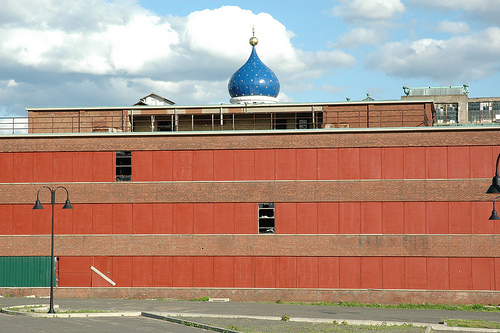In March, the founder and longtime head of the NYU Computer Science department, Jacob T. (Jack) Schwartz, died at age 79 — the same week I applied to enter a Master’s program at the department. See excerpts from his New York Times obituary, below.
Schwartz had an intriguingly prolific and varied career. These quotes struck me:
“Throughout his life, Dr. Schwartz, who was known as Jack, moved from one scientific field to the next. He was not a dilettante, but mastered each field in turn and then made significant contributions.” “At his death [at age 79] Dr. Schwartz was actively working on research in both molecular biology and logic.”
Like recently-nominated Supreme Court Justice, Sonia Sotomayor, Schwartz was born to a working class, immigrant family in the Bronx, and rose through outstanding academic attainment to the highest levels of his field.
He attended City College of New York, founded in 1847 as the Free Academy of the City of New York and the first free public institution of higher education in the United States. CCNY has traditionally been a haven for the most talented poor and immigrant students in New York, until recently charging no tuition; it numbers among its alumni luminaries in many fields.
Wikipedia notes:
“In the years when top-flight private schools were restricted to the children of the Protestant Establishment, thousands of brilliant individuals (especially Jewish students) attended City College because they had no other option. CCNY’s academic excellence and status as a working-class school earned it the titles ‘Harvard of the Proletariat’, the ‘poor man’s Harvard’, and ‘Harvard-on-the-Hudson’.” “Even today, after three decades of controversy over its academic standards, no other public college has produced as many Nobel laureates.”
Other alumni of note:
in public life: Supreme Court justice Felix Frankfurter, Henry Kissinger, NY Mayor Ed Koch, Daniel Patrick Moynihan, WWII spy Julius Rosenberg, and Robert F. Wagner, Sr., the US Senator who introduced the National Labor Relations Act.
In the arts: Woody Allen (attended briefly), playwright Paddy Chayevsky, composer Ira Gershwin, director Stanley Kubrick, Sterling Morrison (musician, co-founder of “The Velvet Underground”) actor Zero Mostel, and great modernist photographer Alfred Stieglitz.
Authors: Bernard Malamud, Walter Mosley, Mario Puzo, A.M. Rosenthal (former executive editor of The New York Times), Upton Sinclair, Lewis Mumford.
Also:
Stanley H. Kaplan, founder of Kaplan Educational Services; Andrew S. Grove, founder of Intel Corp; Herman Hollerith, inventor of key punch and electric tabulator for Census Office, founder of precursor firm to IBM; and Jonas Salk, inventor of the polio vaccine.
The department Schwartz started at NYU seems to be going strong today: see http://www.cs.nyu.edu/csweb/ for view of the multitudinous and multidisciplinary events & research going on there now.
——-
Jacob T. Schwartz, 79, Restless Scientist, Dies
By JOHN MARKOFF
New York Times, March 3, 2009
http://www.nytimes.com/2009/03/04/science/04schwartz.html
“Jacob T. Schwartz, a mathematician and computer scientist who did seminal research in fields as diverse as molecular biology and robotics, died Monday at his home in Manhattan. He was 79.
“He died in his sleep of liver cancer, his wife, Diana, said. He was chairman of the computer science department at New York University, which he founded, from 1964 to 1980.
“During a career that also included 42 years as a professor at the Courant Institute for Mathematical Sciences at the university, Dr. Schwartz wrote more than a dozen books and more than 100 scientific papers and research reports. At his death Dr. Schwartz was actively working on research in both molecular biology and logic.
“Throughout his life, Dr. Schwartz, who was known as Jack, moved from one scientific field to the next. He was not a dilettante, but mastered each field in turn and then made significant contributions. […]
“The son of Ignatz and Hedwig Schwartz, Dr. Schwartz was born on Jan. 9, 1930, in the Bronx. He received his bachelor of science degree from City College of New York in 1949 and his master’s degree and Ph.D. from Yale.” […]


